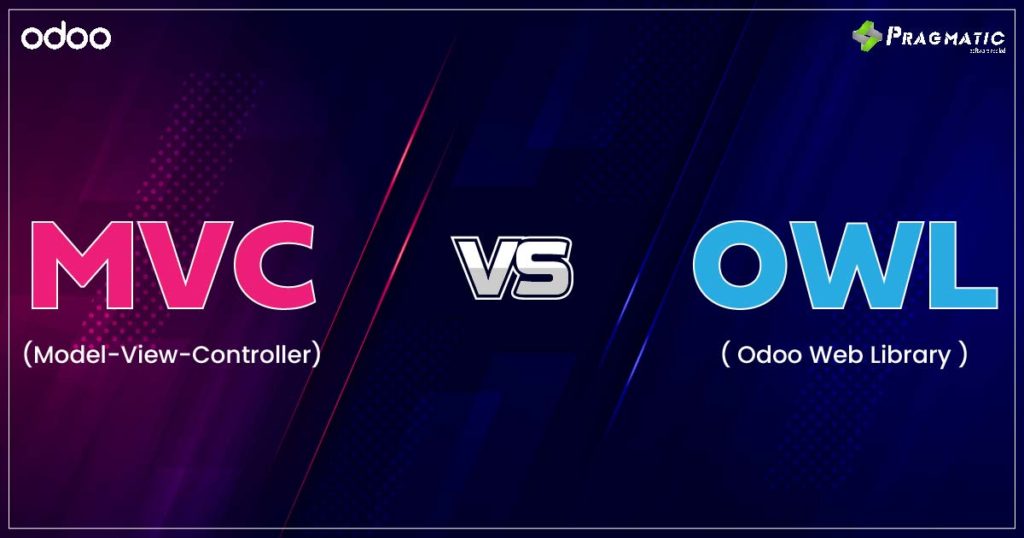

Stuck in a decision-making loop for your next Odoo Project?
Consider this your tech showdown : MVC (Model-View-Controller), the tried-and-true veteran, versus OWL, the fresh-faced rookie. MVC is your trusty USB drive—reliable and universally understood. OWL (Odoo Web Library) is like Cloud storage—modern, flexible, and geared for the future.
Which will elevate your Odoo project to the next level?
This choice isn’t just a technical fork in the road; it’s a strategic move that can shape the efficiency, scalability and success of your Projects.
Stick around as we decode these frameworks, helping you pick the right tool for your digital toolbox.

MVC or Model-View-Controller, is a design pattern that has been a staple in software development for years. It divides your application into three interconnected layers:
MVC is often the go-to for traditional Odoo Projects that require robust backend functionalities. It’s excellent for projects that need to interact frequently with databases and server-side logic. It’s easy to understand, maintain, and is highly adaptable to various project requirements.

Odoo Web Library (OWL) is a frontend framework designed to build complex Odoo web clients. It’s built on top of the MVC architecture but adds a layer of modern features like :
OWL is ideal for projects that demand a highly interactive and dynamic user interface. It’s the framework of choice for Odoo’s own web client and is increasingly being adopted for its ease of use and flexibility.
MVC is like the backbone of your Odoo app, focusing on the core functions, while OWL jazzes up the user experience. In simpler terms, MVC handles the nitty-gritty data stuff, and OWL makes it look good on screen.
MVC manages your app’s data.
OWL takes care of how things appear, using MVC’s guidance.
The Controller in MVC makes sure the data and view are in sync.
YOUR FRAMEWORK, YOUR CHOICE
Choosing between MVC and OWL is a strategic decision that can significantly impact your Odoo Projects.
Both frameworks have their merits and the best choice depends on your specific project requirements, team’s expertise and budget.
If you’re just starting, MVC offers a solid foundation. As you gain experience, OWL can provide the advanced features you may need.
For more tailored advice and insights into the world of Odoo, follow Pragmatic Techsoft on our Socials.
We’re here to help you make data-driven decisions that add value to your Projects.
Leave a Reply
You must be logged in to post a comment.